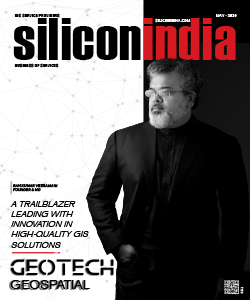Ladakh To Get World's Largest Telescope
![]()
BENGALURU: Unriddling the prestigious project since 2013, Ladakh is likely to get the world’s largest telescope at Hanle. India may exhibit the world's largest telescope project—the $1.47-billion Thirty Metre Telescope (TMT) International Observatory. Hanle in Ladakh has been rated as a prospective site by the TMT board observing intricate issues in Mauna Kea, Hawaii–prospective site and initial option for the same. An international team is probable to visit Ladakh to inspect the site at Hanle in coming months, as reported by Chetan kumar, Indiatimes.
The Hawaii Supreme Court had in December 2015 cancelled the permit issued to TMT for building the observatory based on claims that the plot in Mauna Kea was sacred. While Hawaiian authorities are acting upon re-issual of permit, the TMT Board is reccing for alternative sites to avoid holding up the project.
"Given the enormous investment and potential challenges ahead, it is necessary to also carry out a review of alternate sites,” said Henry Yang, chair of the TMT International Observatory Board after a meeting on February 11. The board has decided on two prospective sites - Hanle and another in Chile. "Yes, it was unexpected turn for the project which got delayed due to the decision of the Hawaiian supreme court”, said B Eswar Reddy, TMT India Programme director after the February Meeting. “Meanwhile, the project is also looking for prospective sites both in northern and southern hemispheres, including Hanle".
India is expected to invest $212 million in the project. The installation process of telescope in Ladakh had started in 2013 and it will show up at Hanle village, near to the Pangong Tso, along the Line of Actual Control. An official in the Indian Astronomical Observatory at Leh said Hanle has ample area, including a large hilly terrain in the village, which has been distinguished for configuring the telescope. The telescope will help scientists examine and analyze the sun’s atmosphere and realize the process of creation and decay of sunspots. India is already building edge sensors, actuators and system support assemblies, aside from contributing to the software of TMT. According to scientists, the main objective of the telescope is to study the subsurface structure of sunspots. The Indian Institute of Astrophysics is the nodal agency for the project.
The Hawaiian problem means at least a two-year delay."However, a lot of technical works–including in India–are progressing well in the partner countries. We expect all the systems to be ready and technical risks retired by the time we resolve the issue of site. Industries are working on prototype development and some are qualified for production and some are still working on," said Reddy. “TMT is hoping to get back to civil construction within two years either on Mauna Kea, Hawaii”
Two major scientific institutions - the Indian Institute of Astrophysics (IIA) Bengaluru and the Inter-University Centre for Astronomy and Astrophysics (IUCAA), Pune - along with two government departments having working on the project since 2013. The department of science and technology (DST) and the Department of Atomic Energy (DAE) are the government partners, while IIA is the nodal agency.
Read Also: Defence Expo Will Boost India's Ties With U.S., Says U.S. Consul General
UN Goal On Global Temperature Unrealistic: Study

.jpg)

.jpg)